- Home
- Jared Diamond
Upheaval: Turning Points for Nations in Crisis Page 17
Upheaval: Turning Points for Nations in Crisis Read online
Page 17
But even Chilean rightists were shocked by a U.S. Senate subcommittee’s revelation that Pinochet had stashed $30 million in 125 secret U.S. bank accounts. While rightists had been prepared to tolerate torturing and killing, they were disillusioned to learn that Pinochet, whom they had considered different from and better than other dishonest Latin American dictators, stole and hid money. Chile’s Supreme Court stripped Pinochet of the immunity from prosecution that he had enjoyed as senator-for-life. Chile’s tax authority (the equivalent of the U.S.’s Internal Revenue Service) issued a complaint against Pinochet for filing false tax returns. (Perhaps the authorities were inspired by the example of the notorious American gangster Al Capone, who successfully avoided conviction for committing and ordering murders, bootlegging, and running gambling and prostitution rings, but who was finally sent to jail for federal income tax evasion.) Pinochet was then indicted for other financial crimes and murders, and was placed under house arrest, and his wife and four children were also arrested. But in 2002 he was declared unfit to stand trial because of dementia. He died of a heart attack in 2006, at the age of 91.
Eventually, hundreds of Chilean torturers and killers were indicted, and dozens of them were sent to prison—including General Manuel Contreras, director of Pinochet’s secret intelligence agency DINA, sentenced to 526 years in prison, and unrepentant to his death. Many older Chileans continue to regard the sentences as too harsh, and continue to regard Pinochet as a wonderful man who was unjustly persecuted. Many other Chileans regard the sentences as too mild, too few, too late, aimed mainly at low-ranking rather than high-ranking criminals, and resulting in their being sent to special comfortable resort-like prisons. For instance, not until 2015 did Chilean judges charge 10 military officers with killing the famous singer Victor Jara in 1973, and seven others with killing Rodrigo Rojas in 1986: 42 and 29 years, respectively, after those deeds. In 2010 Chile’s President Michelle Bachelet opened a Villa Grimaldi Museum in Santiago that documents in horrifying detail the tortures and killings under the military government. That would have been utterly unthinkable as long as Pinochet remained army commander-in-chief.
Chileans are still wrestling with the moral dilemma of how to weigh the positive and the negative sides of their country’s former military government: especially, the dilemma of how to balance its economic benefits against its crimes. The dilemma is insoluble. A simple answer would be: Why even try to weigh the benefits against the crimes? Why not just acknowledge that the military government did both beneficial things and horrible things? But Chileans did have to weigh them in the 1989 plebiscite, when they were offered only the choice between voting “yes” or “no” to keeping Pinochet as president for eight more years, and when they couldn’t vote “yes but…” or “no but…” Faced with that choice, 42% of Chileans voted “yes,” despite the sickening deeds that eventually went on display at the Villa Grimaldi Museum. While most younger Chileans now scorn Pinochet, the division of views among Chileans old enough to remember the Allende and Pinochet years was exemplified for me by two Chilean husband-and-wife couples whom I interviewed. In each case the husband and the wife asked me to interview them separately, because their views of such painful matters differed. In each case the husband then said to me, in effect, “Pinochet’s policies benefitted Chile economically, but his torturings and killings were inexcusable.” The wives said to me, in effect, “Pinochet’s torturings and killings were evil, but you have to understand that his policies benefitted Chile economically.”
From the perspective of our book’s framework about factors facilitating or impeding crisis outcome, Chile illustrates many of them.
First, the changes in Chile were indeed selective and big (factor #3 of Table 1.2). Initially, Chile broke its long-standing tradition of minimal military intervention, and it resolved its long-standing tension between government economic intervention and a government hands-off economic approach by adopting a drastic shift to a hands-off approach. Eventually, when the shift to military intervention was reversed, that reversal itself was made selectively: yes, democratic government was restored, but the shift to a free-market economy that the military had introduced was retained. That became one of Chile’s two lasting selective changes, which also illustrates remarkable flexibility (factor #10): the socialists who eventually returned to power abandoned their commitment to socialism and continued the economic policies of the hated military government. Chile’s other lasting selective change was an end (at least for the last several decades) to the intransigent rejection of political compromise that had characterized national politics for most of Chile’s recent history.
Chile achieved those selective changes through two rounds of uncertainty and failure (factor #9). The first round was Allende’s failed attempt to resolve Chile’s chronic economic and social problems by rejecting compromise and ushering in a Marxist government. The second round was Pinochet’s failed attempt also to reject compromise, and to create a lasting military government and an extended presidency for himself, which was averted by his miscalculation of the outcome of the 1988 referendum.
How did Chile emerge from almost 17 years of military repression and record-smashing government cruelty without even deeper trauma than it did suffer? While Chile today is still struggling with the aftermath of the Pinochet years, I’m pleasantly surprised that Chileans are not more tormented. For that outcome, Chileans’ national identity and pride get much of the credit (factor #6). Chileans still embrace the words of my Chilean friends to me in 1967: “Chile is very different from other Latin American countries; we Chileans know how to govern ourselves.” Chileans have made a big effort to remain different from those other Latin American countries, and to govern themselves effectively. They have been willing to adhere to their motto of “building a Chile for all Chileans,” despite the powerful motives of so many Chileans not to accept other kinds of Chileans as belonging to that same fatherland. Without that national identity, Chile could not have escaped political paralysis, and could not have returned to being the most democratic and the richest country in Latin America.
Chile illustrates both an honest realistic appraisal of strength at one stage, and a lack of such realism at another stage (factor #7). Pinochet and his fellow military leaders proved correct in 1973 that they could prevail over their adversaries inside Chile and abroad; Allende proved wrong in his belief that he could succeed in democratically bringing Marxist government to Chile. This difference further illustrates a sad truth: that success is not guaranteed to well-intentioned decent people, nor necessarily denied to evil people.
Chile illustrates the role both of support and of lack of support from others (factor #4), and of models from which to learn (factor #5). The opposition of the U.S. played a role in Allende’s downfall, and the prompt restoration of U.S. economic aid following the 1973 coup played a role in the military government’s long survival. Pinochet’s perception (not entirely true to reality) of the U.S. economy as a model of a free-market economy played a role in his embracing the economic policies of the Chicago Boys.
Similarly, Chile illustrates both the advantages of freedom of action, and the disadvantages of lack of freedom of action (factor #12). Chile’s geographic isolation by mountains and deserts from its Latin American neighbors greatly reduced the need for Allende or Pinochet to be concerned that their policies might provoke interventions by neighboring Argentina, Peru, and Bolivia. In contrast, dictatorial governments in Uganda, Rwanda, East Pakistan, Cambodia, and many other countries were toppled by interventions by neighboring countries. But Allende’s freedom of action was constrained by the distant U.S., while the freedom of action of all Chilean governments has been constrained by the exposure of Chile’s copper industry (the biggest pillar of the Chilean economy) to world market conditions beyond Chile’s control.
Those are features of Chile’s crisis viewed from the perspective of individual crises. Now, let’s consider features unique to national crises (i.e., not shared with ind
ividual crises), and let’s compare events in Chile with those in the other nations that we are discussing.
First, Chile’s crisis in 1973, like Indonesia’s of 1965 to be discussed in the next chapter, was an internal one, unlike the external shocks to Japan in 1853 and to Finland in 1939. (This is not to deny the role of external pressure from the U.S. in Chile’s crisis.) Both Chile’s and Indonesia’s internal crises arose from political polarization, disagreement about deeply held core values, and a willingness to kill and to risk being killed rather than to compromise.
Second, Chile’s history illustrates the theme of peaceful evolution versus violent revolution. In Germany in 1848 and again in the radical violence that began there in 1968, violent revolution failed, but subsequent peaceful evolution succeeded in achieving many of the same goals. Australia’s changes from 1945 onwards were achieved entirely by peaceful evolution, without even any attempts at violent revolution. In contrast, crises both in Chile and in Indonesia, in 1973 and 1965, respectively, culminated in violent revolutions that brought long-lasting military governments into power. But both of those military governments were removed from power by peaceful protests. While the success of those protests was not assured at the time that they began, the other option of trying to remove Pinochet and Indonesia’s Suharto from power by a violent revolt would surely have provoked and been crushed by the armed forces. But neither the Chilean nor the Indonesian armed forces could bring themselves to shoot at huge crowds of peaceful protestors on the streets.
Third, Chile, again like Indonesia in 1965 and Germany in 1933 but unlike Meiji Japan or post–World War Two Australia, illustrates the role of one exceptional leader: in the case of Pinochet, a leader who was exceptionally evil (in my view). Chilean friends tell me that Chile’s growing polarization in the late 1960’s and early 1970’s made it likely that the resolution of that polarization would be violent. Even before the coup of September 11, 1973, violence had been increasing for six years. What surprised Chileans, such as my friends at the December 1973 dinner party who expected the military government to remain in power for less than two years, was the duration of the violence. It wasn’t just a quick spasm of killings for a few days or weeks after the coup; Chileans continued to be tortured and killed for many years, and Pinochet continued to hold on to power for almost 17 years. That outcome was unexpected not only to ordinary Chileans, but also to the two groups of people whom one would expect to be best able to predict Pinochet’s behavior: his Chilean partners in the junta, who had followed and shared his professional career for several decades; and the CIA, part of whose job it is to understand what may happen in other countries. Pinochet’s junta partners were as surprised as was the CIA by his ruthlessness and determination to cling to power, so contrary to the traditions of all previous coup leaders in Chile’s history. His individual psychology continues to baffle historians.
The remaining theme illustrated by modern Chilean history involves constraints that pose obstacles to coming to grips with evil deeds of the past. In May 1945 Nazi Germany was militarily completely defeated, many of its Nazi leaders committed suicide, and the whole country was occupied by its enemies. After World War Two, there were still plenty of ex-Nazis in German government, but they could not openly defend Nazi crimes. Thus, Germany did eventually deal publicly with Nazi crimes. At the opposite extreme, when the Indonesian army killed or arranged the killings of over half-a-million Indonesians in 1965, the Indonesian government behind those mass killings remained in power, and it is still in power today. Not surprisingly, even today, more than 50 years after the mass killings, Indonesians hesitate to talk about them.
Chile is an intermediate case. The Chilean military government that ordered killings yielded peacefully to a democratic government. But the military leaders remained alive and retained much power. Chile’s new democratic government initially didn’t dare proceed against military criminals. Today, it is still proceeding cautiously. Why is it cautious? Because the army might come back. Because there are still lots of Chileans who defend Pinochet. Because “a Chile for all Chileans” means, unfortunately, a Chile that includes former war criminals.
Finally, many of my American readers, concerned about growing political polarization in the U.S. today, will find this account of recent Chilean history frightening. Despite Chile’s strong democratic traditions, Chile’s political polarization and breakdown of compromise culminated in violence and a dictatorship that few Chileans had foreseen. Could that happen in the U.S.?
One might immediately object, “No, of course not! The U.S. is different from Chile. The U.S. army would never revolt and usher in a dictatorship.”
Yes, the U.S. is indeed different from Chile. Some of those differences reduce, and some of them increase, the risk of an end of democracy in the U.S. If democracy does end in the U.S., it won’t be through an uprising led by the heads of the armed forces; there are other ways to end democracy. I’ll defer further discussion of these questions about the U.S. to Chapter 9.
When I returned to Chile in 2003, for the first time since I left that country in 1967, I visited Allende’s presidential palace, now open as a tourist attraction. I had been told that the public is free to enter. At the front door was a grim-looking policeman (carabinero), holding a rifle and standing on a box one-and-a-half feet high, so that he towered over me. He looked down at me, glared without smiling, and asked what I wanted. I replied that I was a tourist, and he let me pass. But I found myself wondering what he might do, and whether I was unknowingly violating some regulation. I reflected: “It was a policeman or soldier like that who doused Rodrigo Rojas with gasoline and set him on fire!” I felt frightened and left after only a minute, with a better understanding of why Chile’s democratic government has proceeded cautiously in indicting Pinochet’s torturers and killers.
FIG. 5 Map of Indonesia
CHAPTER 5
INDONESIA, THE RISE OF A NEW COUNTRY
In a hotel—Indonesia’s background—The colonial era—Independence—Sukarno—Coup—Mass murder—Suharto—Suharto’s legacies—Crisis framework—Returning to Indonesia
Indonesia is the world’s fourth most populous country, with about 260 million inhabitants, exceeded only by China, India, and the United States. It’s also the world’s most populous country with a predominantly Muslim population, home to more inhabitants than even Pakistan, Bangladesh, or Iran. Those facts could lead one to expect Indonesia to get lots of attention from American and European newspapers.
In fact, the word “Muslim” makes Westerners think instead of other countries that figure much more in Western consciousness than does Indonesia. Nowadays, American and European newspapers mention the country only infrequently. The few occasions in the last 15 years when I can recall front-page articles about it were when two big earthquakes and a plane crash killed many people in 2018, when several drug-runners who included foreign citizens were executed in 2015 in spite of foreign protests, when 200,000 people were killed by a tsunami in 2004, and when a bombing in Bali in 2002 claimed many victims. That general lack of attention is because Indonesia today isn’t characterized by things that are the stuff of international headlines, like civil wars, sending terrorists or waves of immigrants overseas, being either rich or else desperately poor, or making lots of noise in international politics. Insofar as we Americans think of Indonesia at all, our image is of a developing country with pleasant tourist attractions, especially the scenery and beaches and Hindu temples of Bali, the world’s richest coral reefs and best scuba diving and snorkeling, and beautiful batik textiles.
My first trip to Indonesia was in 1979, when I began my visit by staying in a hotel whose lobby walls were decorated with paintings telling the story of Indonesian history. In the United States a similar exhibit might display paintings of the American Revolution, the Civil War, the California gold rush, the transcontinental railroads, and other such subjects from 150 to 250 years ago. But in that Indonesian hotel lobby, all of the paintings
showed events of just the previous 35 years. The event that was the subject of most paintings was termed the 1965 Communist Revolt. Paintings, and explanatory text below them, vividly depicted how communists tortured and killed seven generals; and how one of the generals that the communists tried to kill managed to escape from his house over a wall, but his five-year-old daughter was shot by accident and died a few days later. The exhibit left the impression that the torture and killing of those generals and the young girl were the most horrible act that had ever happened in Indonesian history.
The exhibit made no mention of what followed the deaths of the generals: the murder of about half-a-million other Indonesians at the instigation of the Indonesian armed forces. Not mentioning those killings in an exhibit on Indonesian history is quite an omission, because, among mass killings around the world since World War Two, only a few others have exceeded that Indonesian death toll. In the two decades since that first visit of mine, during many return visits and lengthy stays in Indonesia, not once did I hear those killings mentioned by my Indonesian friends—until a change of government in 1998. It’s as if General Pinochet’s government in Chile had killed 100 times more Chileans than it actually did, but as if those killings were never mentioned by surviving Chileans, nor by Chilean accounts of Chilean history.

 Why Is Sex Fun?: The Evolution of Human Sexuality
Why Is Sex Fun?: The Evolution of Human Sexuality Guns, Germs, and Steel: The Fates of Human Societies
Guns, Germs, and Steel: The Fates of Human Societies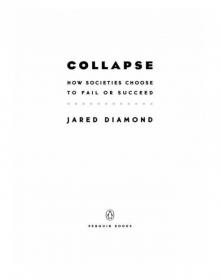 Collapse: How Societies Choose to Fail or Succeed
Collapse: How Societies Choose to Fail or Succeed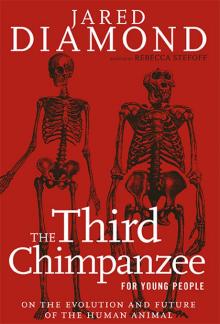 The Third Chimpanzee: The Evolution and Future of the Human Animal
The Third Chimpanzee: The Evolution and Future of the Human Animal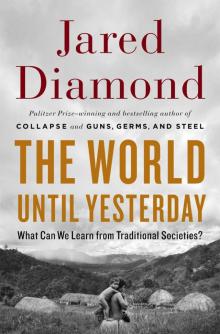 The World Until Yesterday: What Can We Learn From Traditional Societies?
The World Until Yesterday: What Can We Learn From Traditional Societies?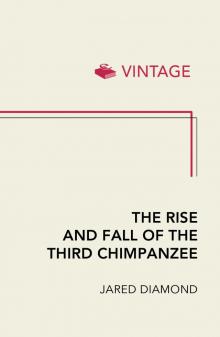 The Rise and Fall of the Third Chimpanzee
The Rise and Fall of the Third Chimpanzee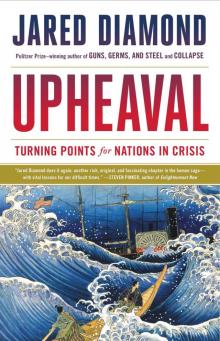 Upheaval: Turning Points for Nations in Crisis
Upheaval: Turning Points for Nations in Crisis Guns, Germs, and Steel
Guns, Germs, and Steel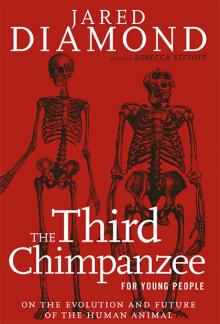 The Third Chimpanzee for Young People
The Third Chimpanzee for Young People Why Is Sex Fun?
Why Is Sex Fun?